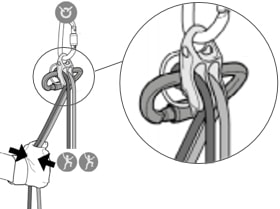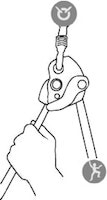Collecting every piece of gear takes a little time.
We think it's worth the wait.
Nice choice!
Give us a moment to collect those options for you.


Search by model name only, and spelling counts. Protip: Type slowly and wait for the auto-complete.
If you’ve already used other filters, this search bar will not override them.
Retired gear and unfilterable gear (missing key specs like price/weight) will not appear with this search.


It can be frustrating to find a piece of gear that you like, and then have no buying options. This filter aims to ease that problem. In the future we plan to add non-US retailers to this list and possibly call out each retailer directly.
We feel a little weird calling out Amazon separately as we're not huge fans of this mega-corp. We do this because we're partners with Amazon in multiple countries, so if somebody from the US, Canada, or UK clicks an Amazon link, it'll go to their country-specific Amazon page (when possible). At the moment, this is the only way to find non-US buying options on the site.


In grams, the weight, as stated by the manufacturer/brand.
The bulk of tube style belay devices are under 100 grams.
Above 100g and the devices are mostly mechanical or heavy duty figure 8’s.


The full retail price in US dollars as stated by the brand/manufacturer/US distributer.
With non-US products, we have statically converted the price to US dollars.
This static conversion also means it's possible that there will be some misleading figures at times. The original price and currency will be noted on the individual product pages.
For belay devices, there are very few options under $15.
Most manufacturers seem to aim for under $25 for normal tube devices and under $35 for guide-mode tubers.
Most brake assist devices are above $50.


Brake Assist significantly reduces the amount of holding power the belayer must exert to stop a fall and hold a climber. Many gyms now require them for indoor climbing.

Mechanical brake assist devices, is when there is a mechanism, like a cam, that moves to stop the rope. They are similar to the GriGri. They only hold a single strand of rope.
Tube or "non-mechanical" brake assist devices use the ropes own friction/weight to hold the rope. They are usually lighter and some hold two strands of rope for rappel.
This is the most common style of belay device, soon to be overtaken by brake-assist devices.

Mostly used by rescue, canyoneering, tactical, work safety, or old school climbers. They went out of popularity because they twist the rope.

Plates tend to be lightweight and are quite versatile yet they take more time to understand the nuances for smooth use.



1 rope only You can only use Single ropes while belaying. Although you can lower a climber, you cannot simply rappel with them. The majority of brake assist devices can only accommodate 1 rope.
1 or 2 ropes You can belay with a single rope or double/half/twin ropes. You may also do standard double rope rappels (using a single rope through an anchor). This is essential for the majority of multi-pitch climbers.


This is when you belay directly off the anchor instead of your harness. Guide mode is helpful if you climb outdoors a lot because it reduces the holding power required from the belayer. When your partner falls or rests, the weight of the climber is held mostly by the anchor and the belay device.
When belaying in "guide mode," the tubers and plates turn auto-blocking. During a fall, the climbing rope pinches the slack rope, completely stopping the movement of either rope. A common guide mode setup shown below.

There is no difference in the functionality of the device. A brake-hand should always be on the rope to ensure the climber is caught in the case of a fall. A common guide mode setup shown below.

http://www.climbing.com/skill/essential-skills-auto-blocking-belay-devices/


Because sometimes matching is nice.
Note: If you choose a color and the picture does not seem to match, this means it's also available in another color and we just don't have capabilities to show you that color on this page. If you click into the product you'll be able to see more product photos (hopefully!) of the color you're looking for.


If you'd like to narrow down your search by what others consider to be, "The Best Gear" this is your filter. We’re including all the media awards from the magazines like Climbing, Rock and Ice, and Alpinist, along with online resources like Gear Junkie, Outdoor Gear Labs, and more.
We scour the internet for new awards quarterly. If you know of some reputable awards that we’re missing, send us a note so we can check them out.


The list of manufacturers and brands that we have all the technical specs for.
If a brand is missing from this list, scroll to the bottom of this page to see all the unfilterable gear we track, and ideally it'll be there.
If you don't see the brand you're looking for in the unfilterable products area, definitely send us a note so we can look into it further.
We do our very best to find and display every technical spec for every piece of climbing gear in the world. But sometimes we just can’t dig up a spec or two (usually it's the official price and weight). Sadly, this means not every product is available for filtering and sorting :(
If we allowed products that are missing key specs to display in the results above, these incomplete products would need to appear no matter what filters you chose. This would make the filtered results cluttered and misleading. So instead of leaving out these incomplete products entirely, we're listing them below: